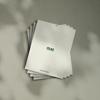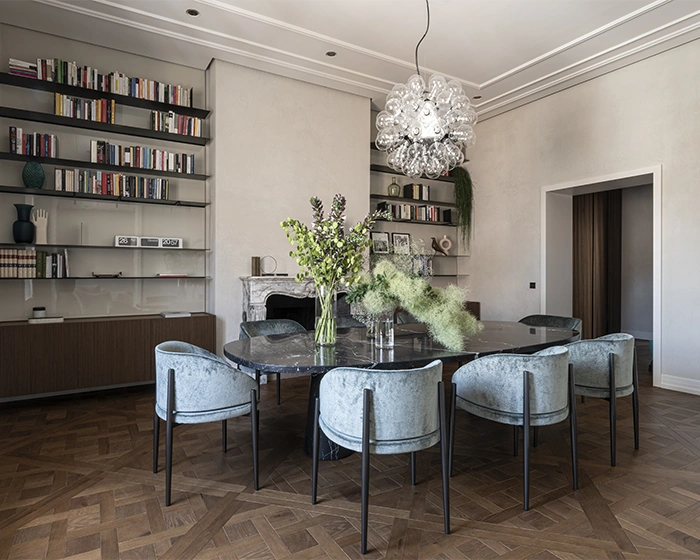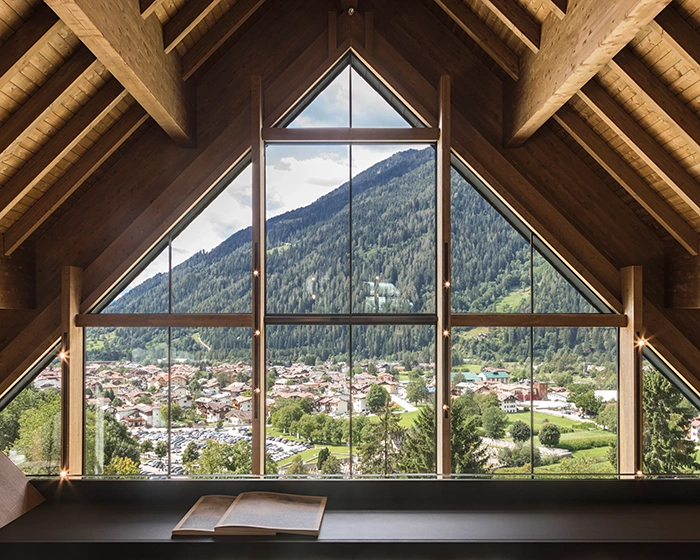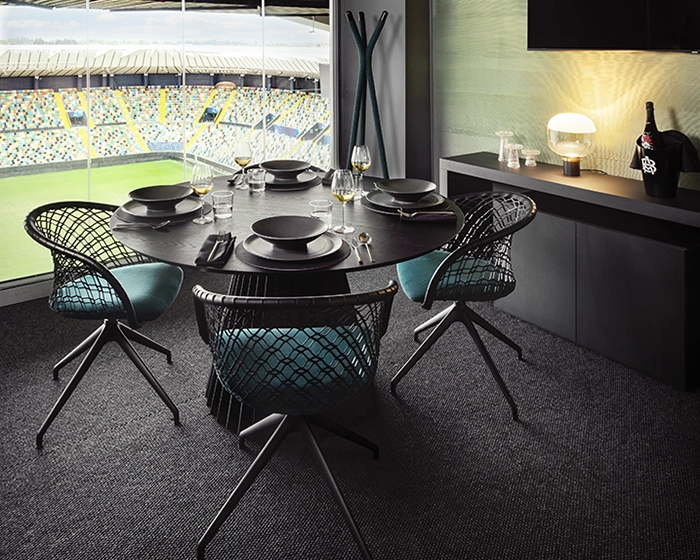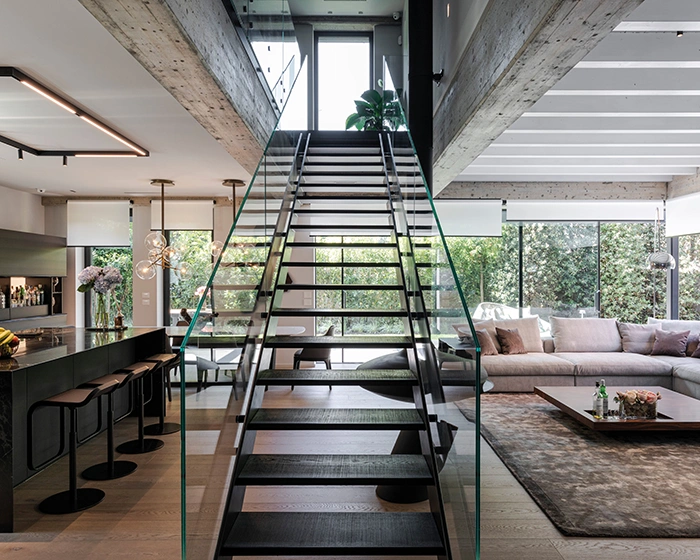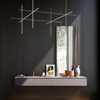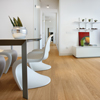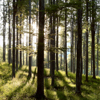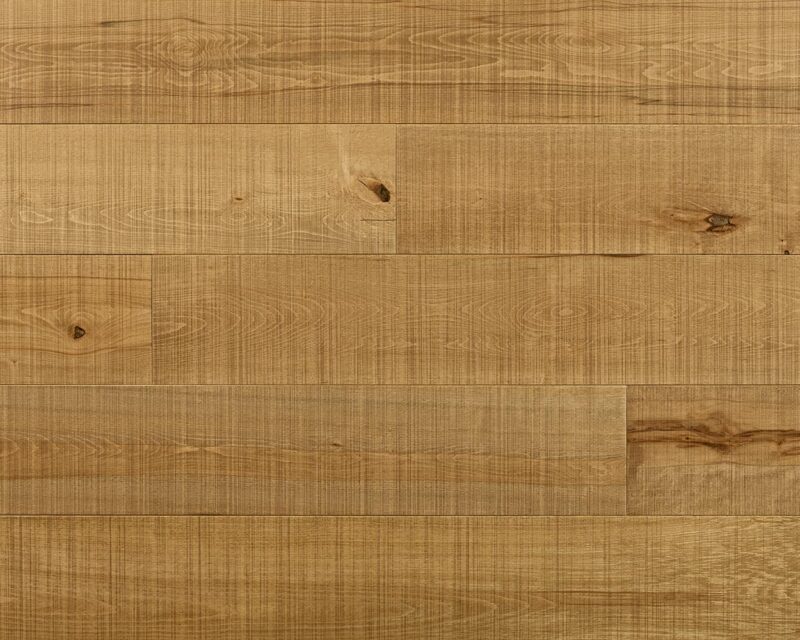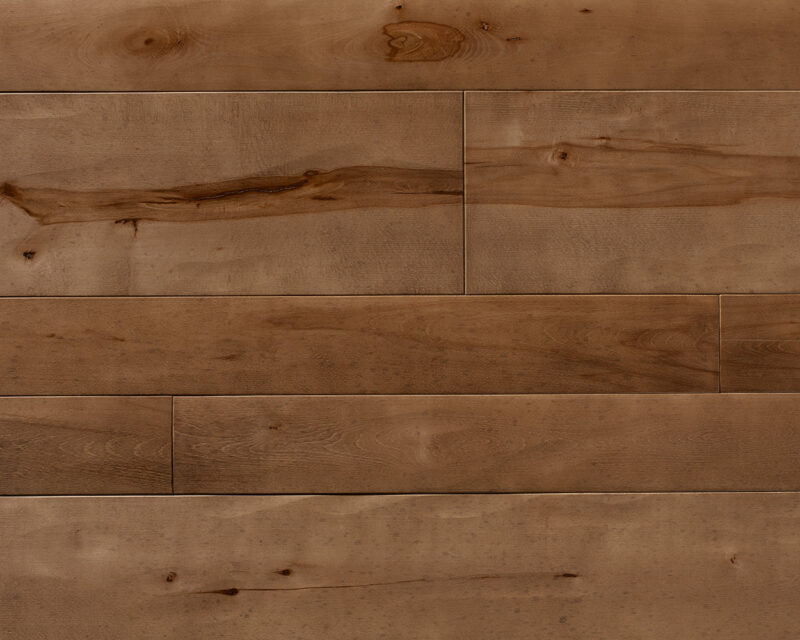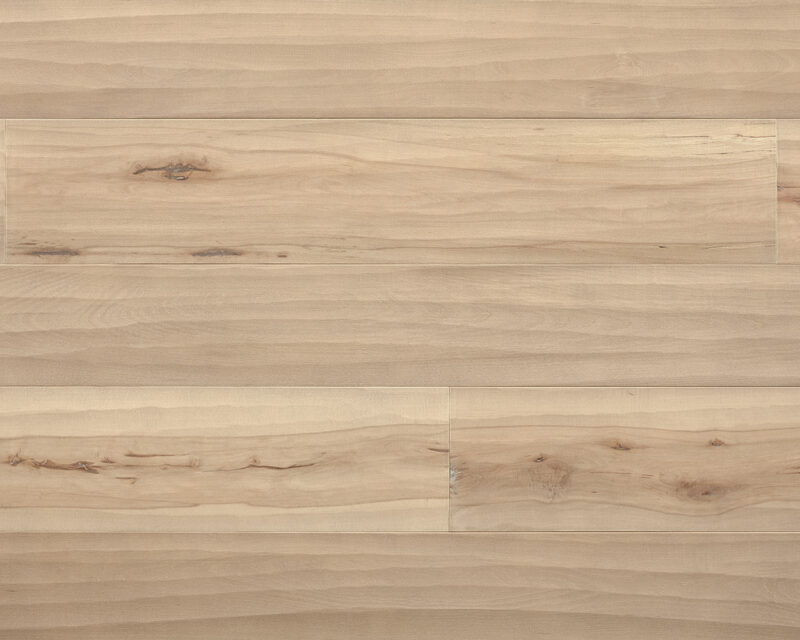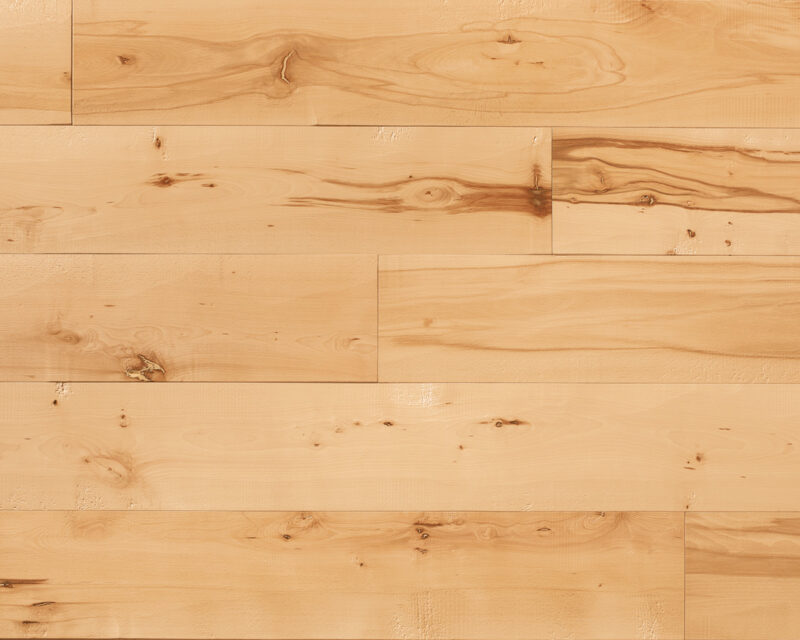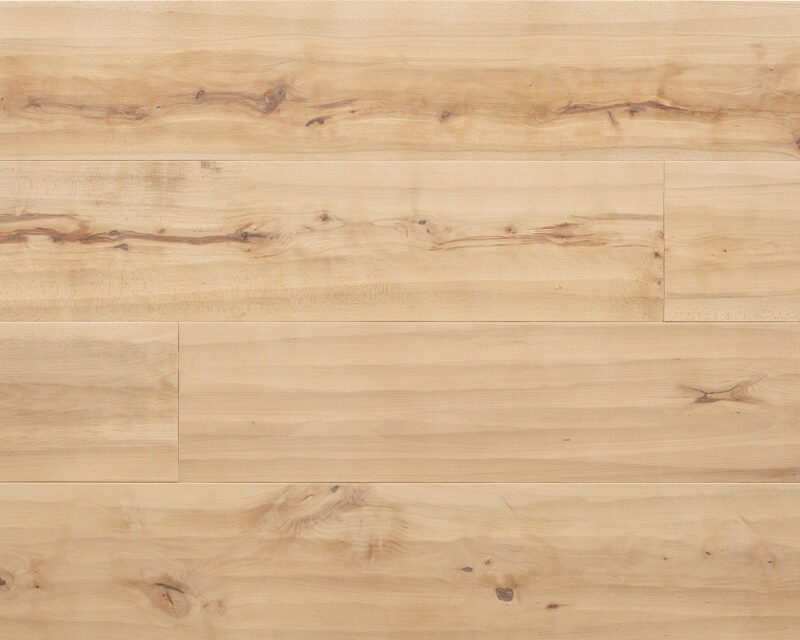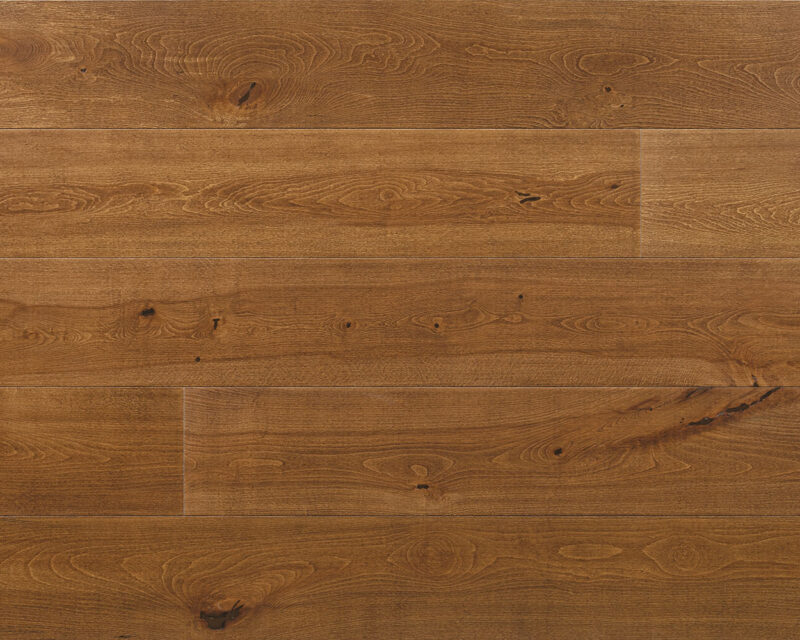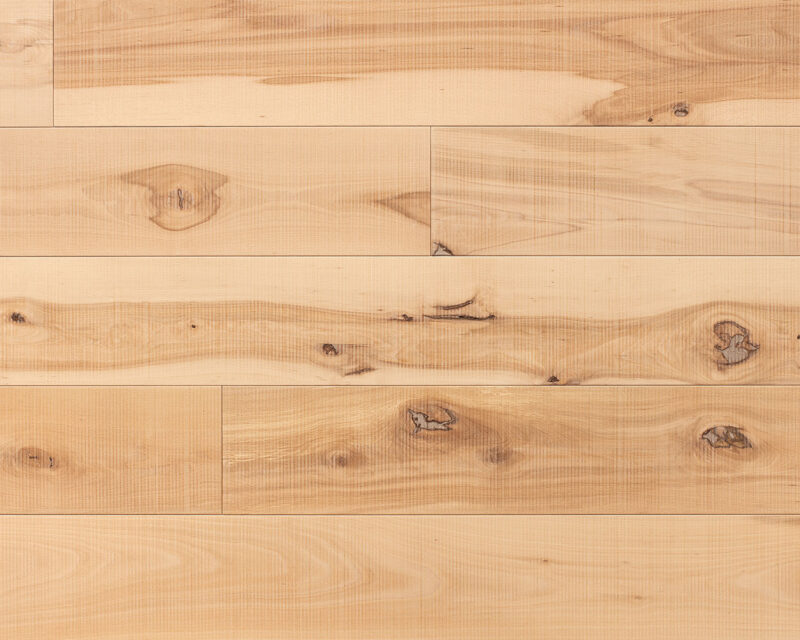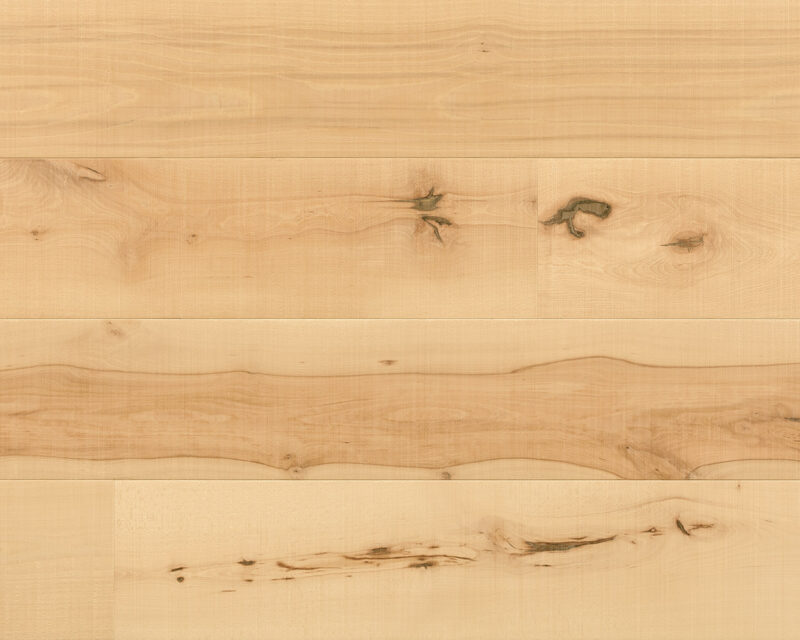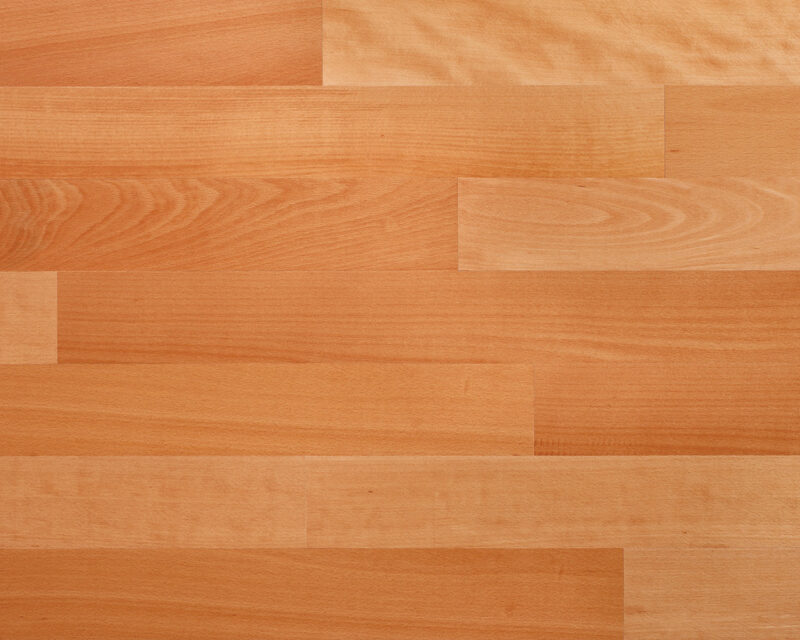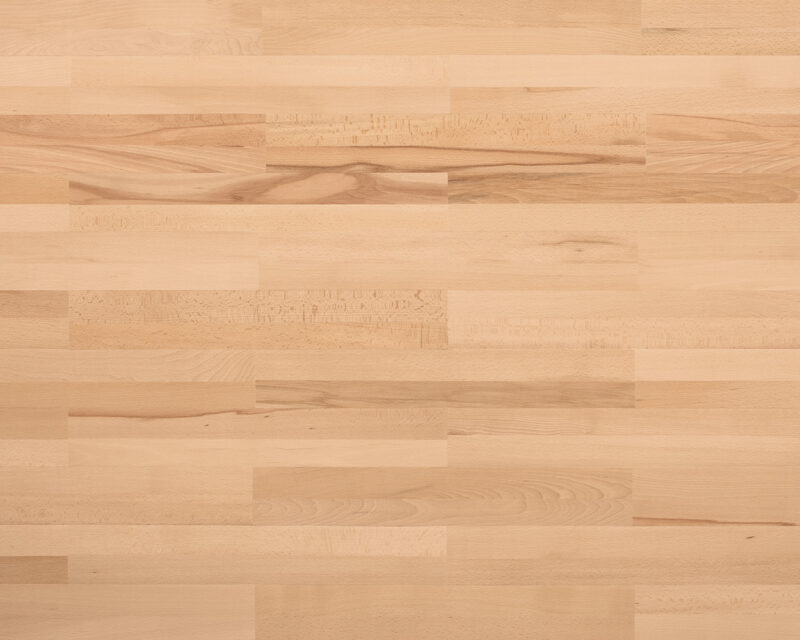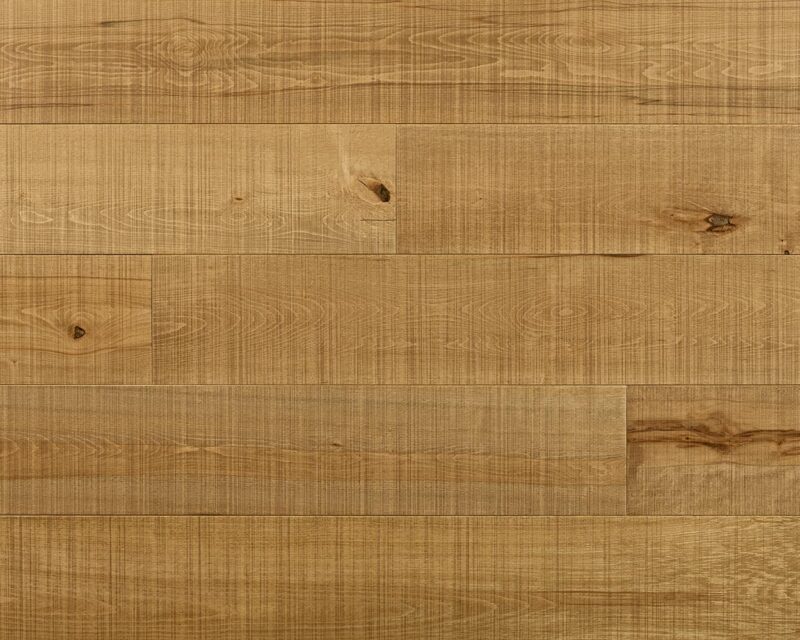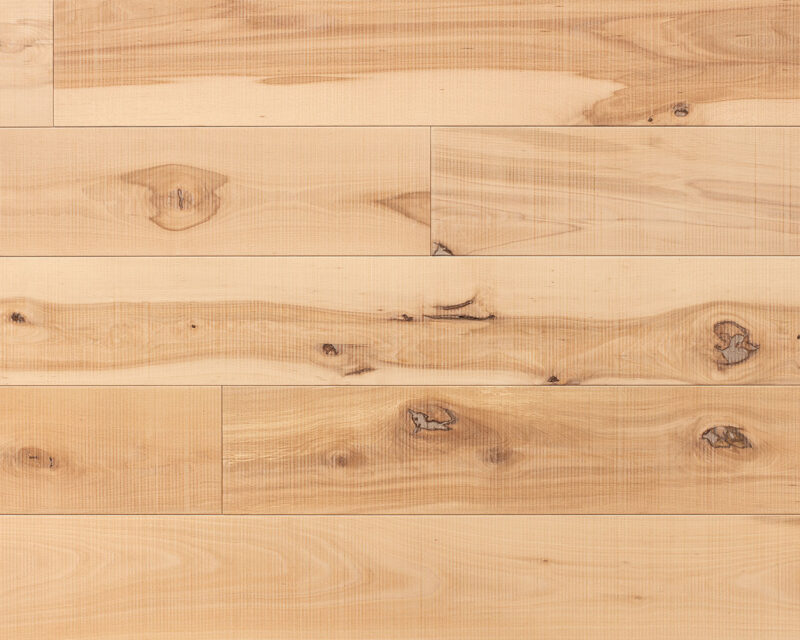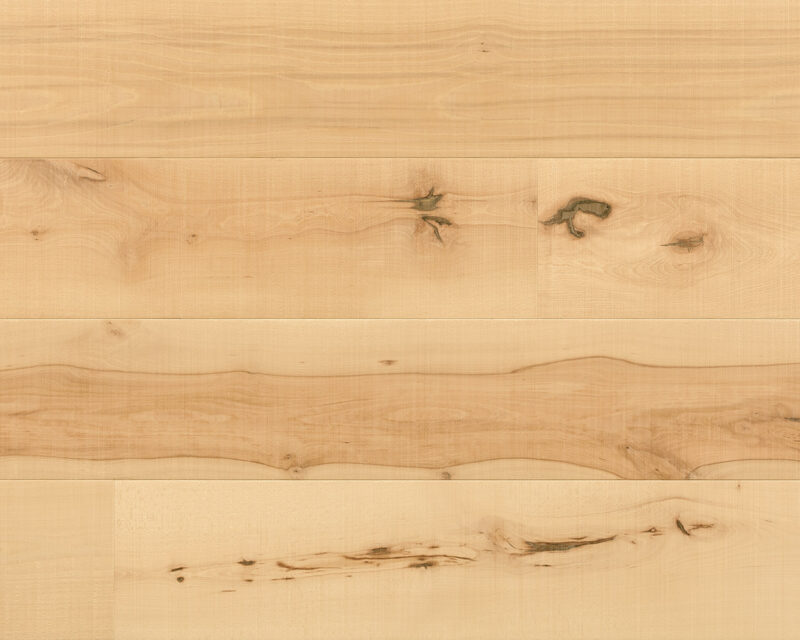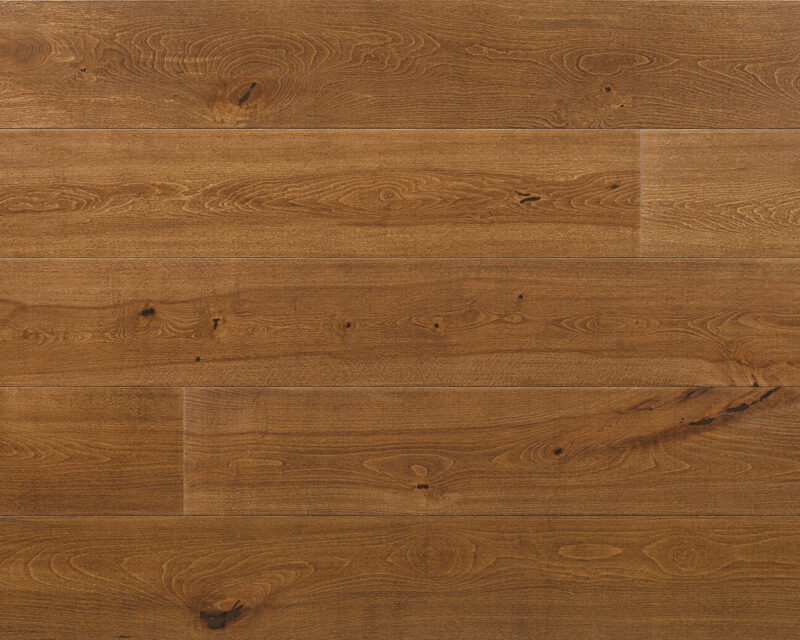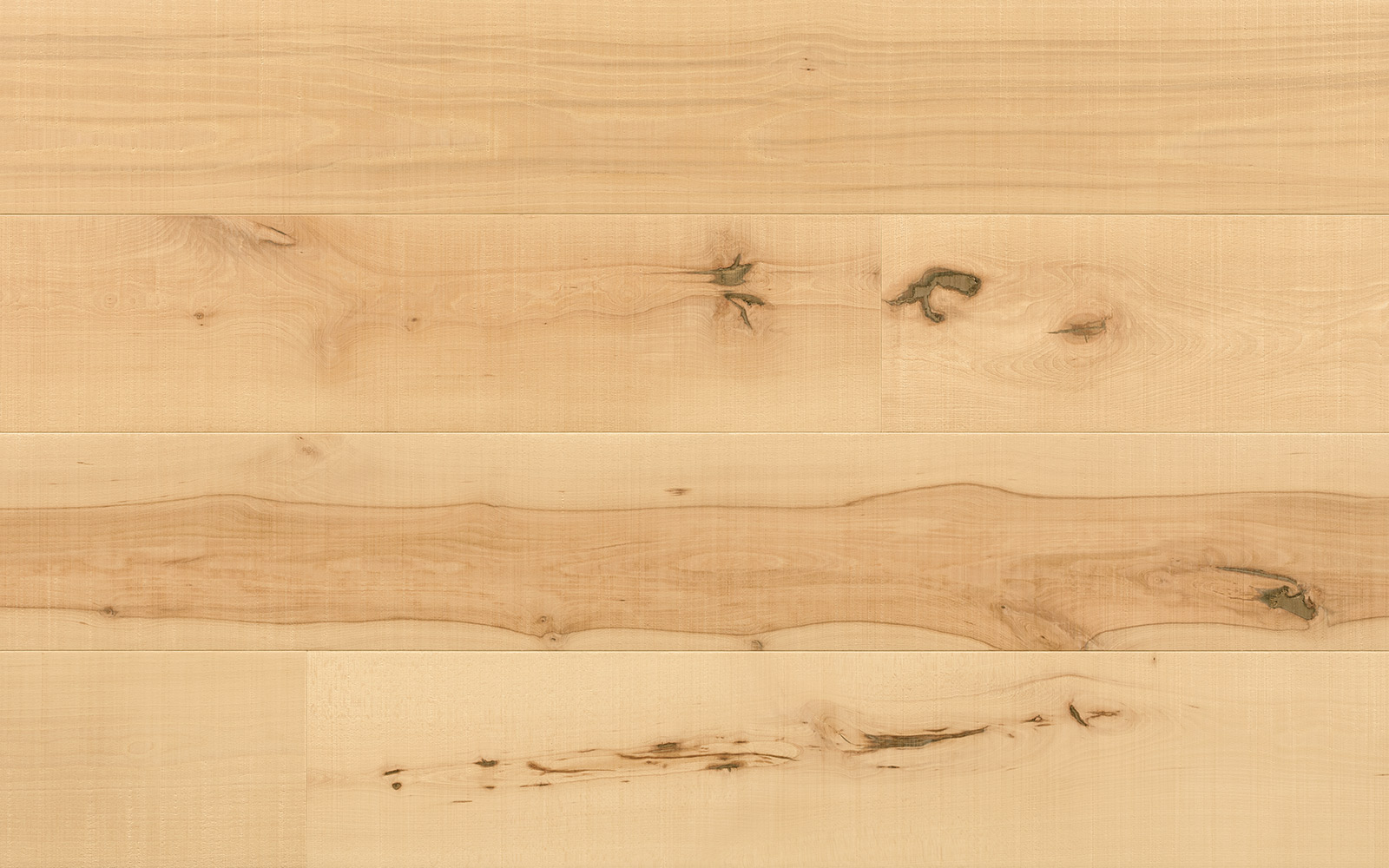
It is semi-hard and compact, uniformly veined, its colour is light creamy and turns to pink if subjected to evaporation processes. It is renowned for its light colour, tending to blonde, extremely delicate. With time and exposure to light, it can turn towards a pale yellow. The grain is very important and it can show different colour shades, according to light. It has a marked porosity, a regular texture; its resistance to bending, shocks, compression and torsion, make it one of the most interesting wood from a mechanical point of view. It is a solid, heavy and thick wood, whose characteristics of solidity and resistance remain unchanged in time. It is easy to be worked, easy to be found in the environment, cheap and hard-wearing. Beech can be curved by steam, and in this case it becomes harder and more flexible. It can show bright streaks due to the presence of medullary rays. Its texture is tight and regular – on the tangential surface it shows a radial grain and a spotted pattern on those cut in quarters. The colour is light and tendentially pinkish, with different shades going from white to reddish-brown, with some yellow tinge that can be better noticed in the brighter days. For those who do not appreciate a very marked grain, but love more homogeneous surfaces and a fine and regular texture, Beech is the perfect wood type. Its delicate grain can be noticed, but in an almost unperceivable way. It is good to mention that Beech has also other physical characteristics – actually, it is a hygroscopic material, so it tends to absorb humidity from the surroundings. This makes it perfect for indoor, but not much recommendable for outdoor.
Among the most renowned and appreciated, Beech parquet is fit both for modern and classic houses. Its light and warm shades are naturally tending to pinkish, with a slight yellow tinge that confers to it a peculiar brightness. This parquet is perfect in any context, for its elegance and great appeal. But its advantages are not restricted only to design, because this material offers many technical qualities also from a practical point of view. Flexibility together with hardness are two of the many qualities of beech. Beech panels, being flexible, can be used also in the production of curved pieces of furniture. It is much loved also by DIY lovers and by all those who want to give to their homes a touch of elegance. Choosing Beech means choosing a wood type that has relevant mechanical properties – it can be easily cut, it is soft and malleable during assembly and construction phases. It can be easily sawn, bended, planed and finished. It is a very resistant wood, so it is not naturally bended, but it can be curved if subjected to evaporation processes. It is among the most resistant, heavy and massive wood types. It is not particularly waterproof and for this reason it is mostly used for indoor (floorings, furniture, walls). Many choose it because its aesthetic qualities, to furnish places of modern to classic style. Its particularly neutral and versatile colour makes beech parquet very eclectic, fit for any type of environment. In fact, it is much appreciated not only in homes but also for commercial buildings, coworking and public places. In addition, it is very much looked for in the production of indoor furniture. Features of this wood are its compactness, its beauty and its versatility – together with its remarkable diffusion and its lightness, they make Beech much appreciated in the production of design elements. Beech parquet conveys order, clarity, positive energy and it goes well with other wood types – for this reason, it is perfect to be used in workplaces.
This wood type is employed for a vast range of items, from parquet to cabinet making and paper industry. Due to its flexibility, it was much used for wagon wheels. Thanks to Tonet, the steam bending of Beech was applied to furniture industry (his chairs are renowned worldwide). Besides the structure and frame of chairs and pieces of furniture, Beech is used also for handicrafts, plywood, veneers, but also for tools, furnishing accessories, musical instruments, toys and boxes for commercial use (e.g. the classic fruit box is typically made of beech). Crude Beech parquet is employed to design soft and delicate environments. Pleasant colour shades for furniture are obtained matching light-coloured lacquering. Evaporated Beech is made by a production process that alters Beech natural colour and makes it more pinkish-red, while emphasizing the grain without altering its pattern. Beech’s many qualities grant many advantages to those who choose it for their DIY jobs and for furnishing their homes. It is hard, but also flexible and resistant. It is easy to be worked and cut, even with very simple tools. It can be worked, sanded, varnished and finished very easily. Ideal for parquet, it is also used for any kind of furniture, from bookshelves to tables and drawers, but also structural elements such as sofas frames. Its hardness guarantees good outcomes also for doors, windows and stairs.
Two are the installation systems: in floating installation, planks are not fixed onto the subfloor by using glue. In this case, with Beech as well as any other wood type, it is better to check that the subfloor be as even as possible, so as to avoid bending. The other installation system is the one with glue – so, particular adhesives are used to fix the planks onto the screed. This is good both for engineered and solid wood parquet. In this case too it is better to first check the subfloor.
Taking care of a Beech parquet does not require specific instructions, or better, nothing different from the attention that must be devoted to a wooden flooring. It is useful to use electrostatic microfibre cloths that attract dust, while it is recommended not to use steam cleaning machines. Beech flooring can be cleaned using a well-wrung mop and water (not hot) or, better, water with a proper cleanser.
Fill out the form adding your request and we will contact you as soon as possible.
